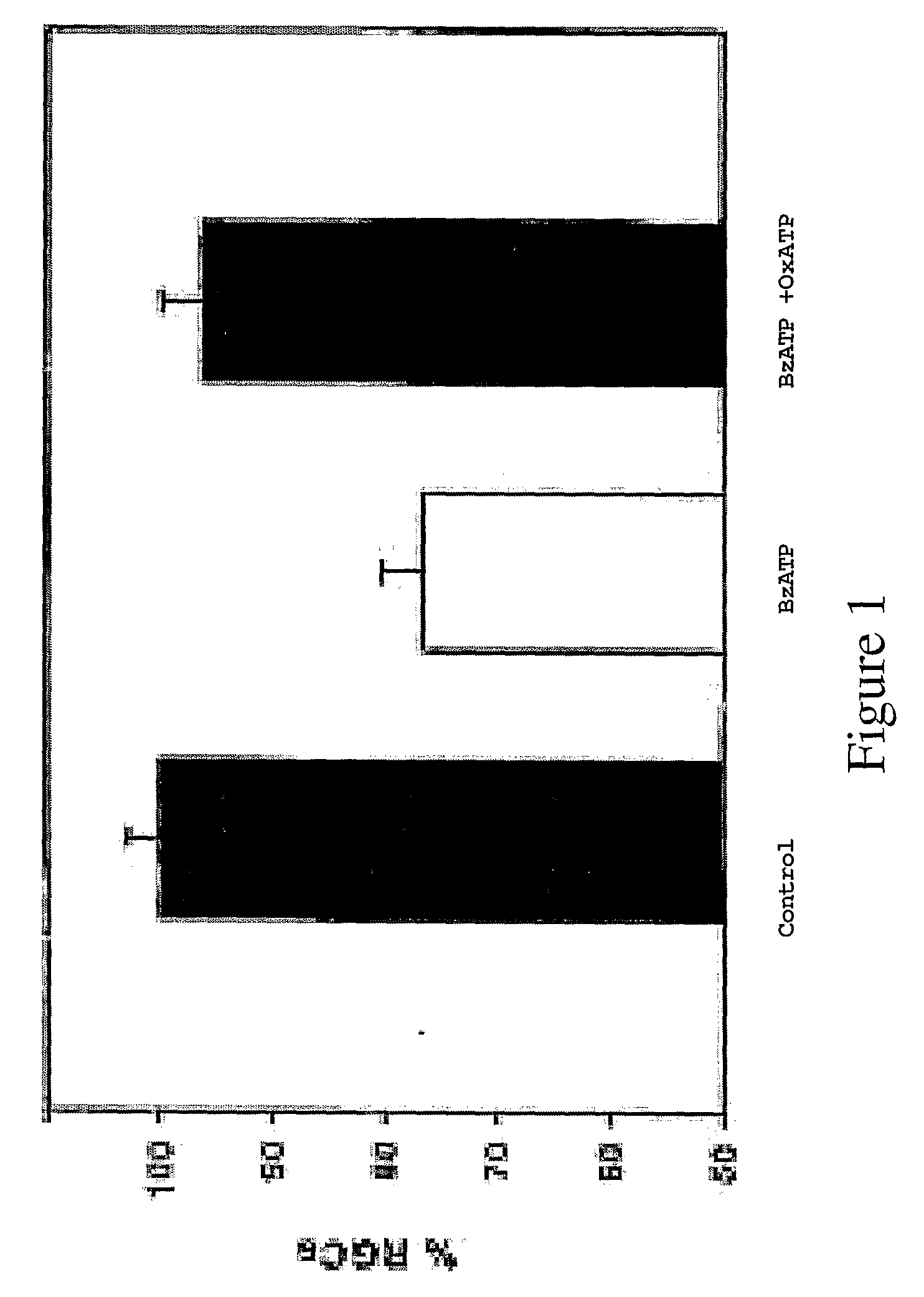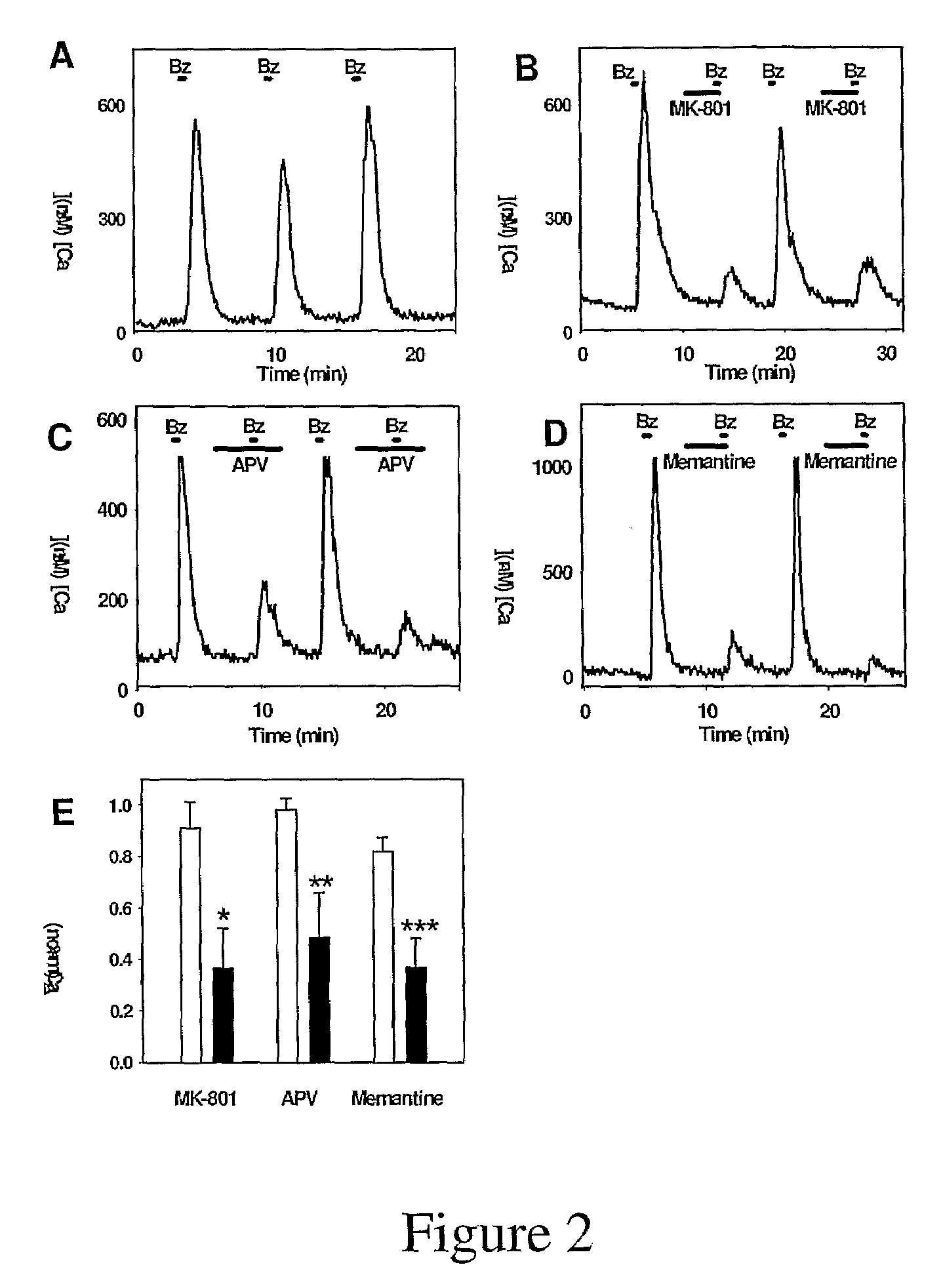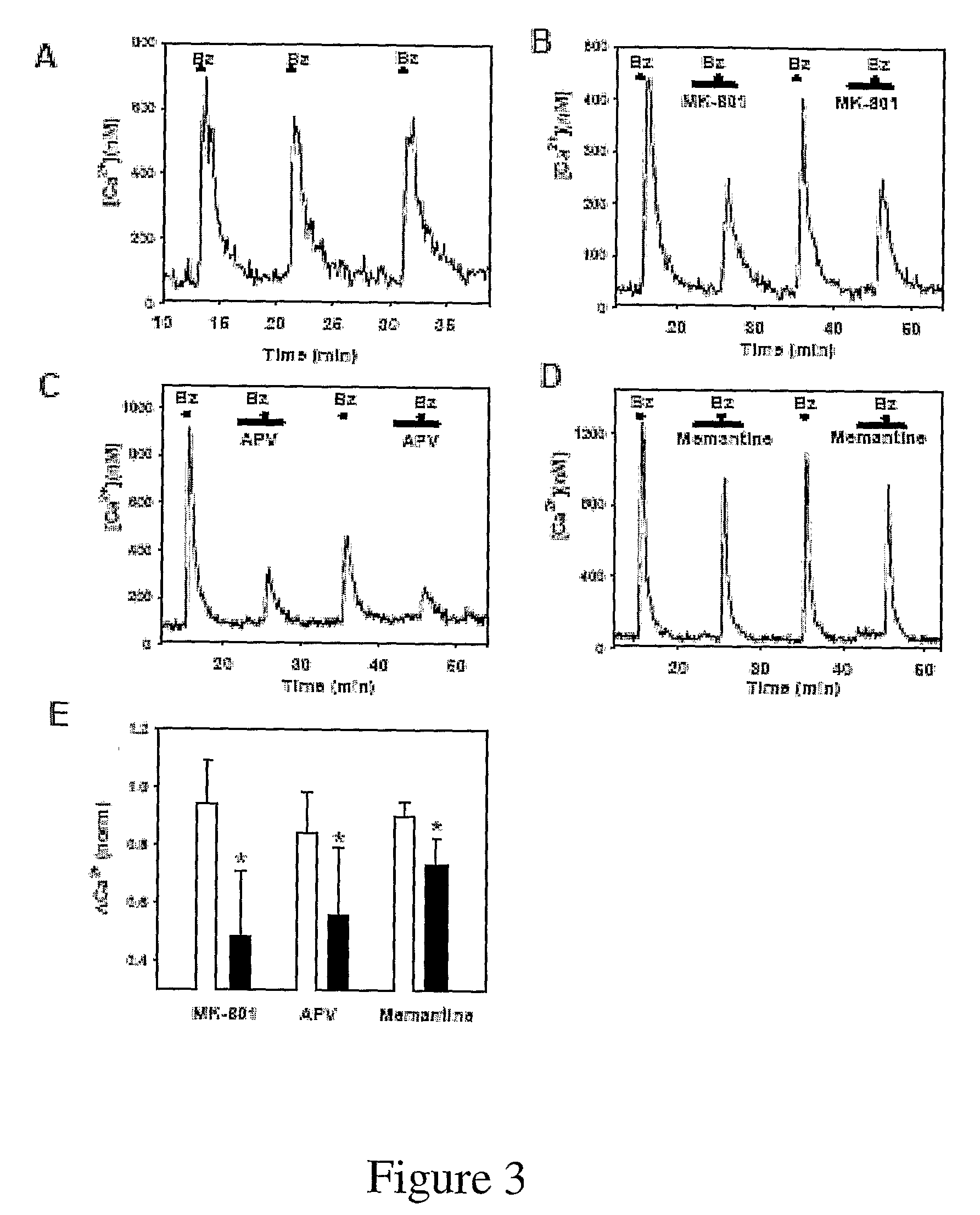Neuroprotection of retinal ganglion cells
a technology of retinal ganglion cells and neutrophils, which is applied in the direction of antibody medical ingredients, phosphorous compound active ingredients, peptide/protein ingredients, etc., can solve the problems of affecting the preservation of ganglion cells in glaucoma, affecting the ability to preserve ganglion cells in glaucoma, and affecting the survival of ganglion cells, etc., to achieve the effect of increasing pressur
- Summary
- Abstract
- Description
- Claims
- Application Information
AI Technical Summary
Benefits of technology
Problems solved by technology
Method used
Image
Examples
example 1
Adenosine Prevents Death of Retinal Ganglion Cells Following P2X7 Receptor Activation by Acting at A3 Receptors
[0109]As the excessive influx of Ca2+ accompanying stimulation of the P2X7R in retinal ganglion cells was similar to that observed after N-methyl-D-aspartate (NMDA) receptor activation, it was hypothesized that activation of N-methyl-D-aspartate (NMDA) receptors could occur downstream from P2X7R stimulation. Initial experiments examined whether NMDA antagonists could modify the effect of P2X7R agonist BzATP on neuronal Ca2+ levels. Ganglion cells present in preparations of mixed is retinal cells were examined first. Brief 15 sec applications of BzATP triggered large, reversible and repeatable elevations in the Ca2+ levels of retinal ganglion cells (FIG. 2A). However, the ability of BzATP to increase Ca2+ was attenuated by NMDA antagonists. The presence of the NMDA channel blocker MK-801 in the bath during alternative applications of BzATP decreased the response. (FIG. 2B). ...
example 2
NMDAR Kills Neurons Following P2X7R Activation
[0116]Stimulation of the P2X7 receptor leads to the activated of caspases and death of retinal ganglion cells. In light of the present findings demonstrating a role for glutamate in the large Ca2+infux following BzATP application, and as excess influx of Ca2+ through the NMDA receptor can lead to neuronal death, the activation of NMDA receptors contribution to the cell death accompanying BzATP was investigated.
[0117]Labeled ganglion cells in mixed retinal cultures were incubated under various conditions and the number of ganglion cells surviving after 24 hrs was determined. BzATP significantly reduced cell survival, with levels falling to only 62.9% of control. However, 10 μM MK-801 completely prevented the loss of cells, with levels rising to 102.7±3.2% of control. Morphologically, the surviving cells were indistinguishable from those under control conditions. Cell death was also reduced by APV, albeit to a smaller extent with survival ...
example 3
Adenosine Prevents the Rise in Ca2+ Triggered by BzATP
[0119]Stimulation of the P2X7 receptor with agonist BzATP led to large elevations in cytoplasmic Ca2+. Sustained application of BzATP was previously shown to evoke a sustained increase in Ca2+ [see above examples]. However, brief application of 50 uM BzATP led to large and transient elevations in Ca2+ (FIG. 7A). With a periodic wash in between applications, repeated exposure to BzATP led to repeated elevations in Ca2+ that showed little evidence of a reduction in amplitude. This was previously shown to be due to the influx of Ca2+into the cell and involve the P2X7 receptor [see above examples]. The ability to evoke recurring responses was used to examine the effect of adenosine on the Ca2+ response. Although BzATP was able to raise Ca2+ when applied alone, addition of adenosine greatly reduced the response (FIG. 7B). Removal of adenosine and subsequent reapplication of BzATP triggered another large elevation, indicating the block...
PUM
| Property | Measurement | Unit |
|---|---|---|
| extracellular pressure | aaaaa | aaaaa |
| pressure | aaaaa | aaaaa |
| pressure | aaaaa | aaaaa |
Abstract
Description
Claims
Application Information
 Login to View More
Login to View More - R&D
- Intellectual Property
- Life Sciences
- Materials
- Tech Scout
- Unparalleled Data Quality
- Higher Quality Content
- 60% Fewer Hallucinations
Browse by: Latest US Patents, China's latest patents, Technical Efficacy Thesaurus, Application Domain, Technology Topic, Popular Technical Reports.
© 2025 PatSnap. All rights reserved.Legal|Privacy policy|Modern Slavery Act Transparency Statement|Sitemap|About US| Contact US: help@patsnap.com



